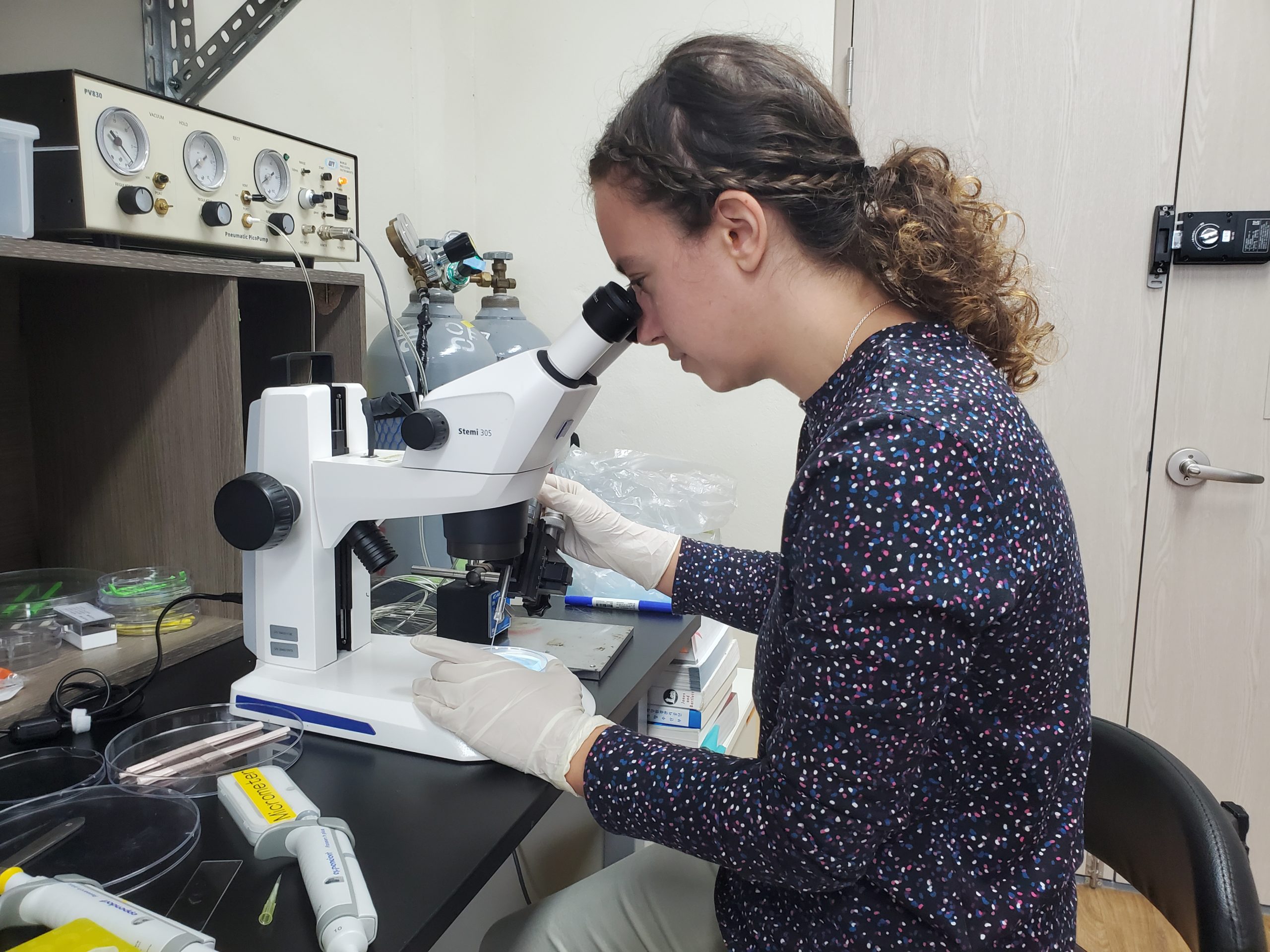

Exploring gene editing in aquaculture
May 3, 2024
The Crawford Fund’s highly sought after Student Awards are one way we support and encourage the next generation of Australians into study, careers and volunteering in international agricultural research. Applications for the 2024 Student Awards are currently open!
The awards are funded by our State and Territory Committees and made possible by organisations including ACIAR, international centres, Australian and overseas universities and NGOs who host our awardees.
We would like to share the experience of Megan Moran from James Cook University who travelled to the Marine Science Institute in Jeju in South Korea to learn firsthand about genome editing in aquaculture.

“Australia does not currently have the expertise to conduct genome editing in aquaculture species. In contrast, numerous countries in Asia have successfully cultivated this technique. Therefore, I am grateful that the Crawford Fund provided the opportunity for me to travel overseas to obtain the training required for microinjection to perform gene editing in fish. I travelled to Jeju, South Korea to visit Professor Jehee Lee and his students at the Marine Science Institute which operates through Jeju National University,” said Megan.
“Professor Lee’s research primarily focuses on gene editing, genome selection and vaccine development for aquaculture species. This opportunity allowed for me to meet with some of the leading experts to discuss the use of genome editing within the aquaculture industry and learn the techniques required,” she said.
“Specifically, I learned about the different tools commonly used for gene editing and how the methods of application may vary according to species. Incorporating this technology into aquaculture production has the potential to bring considerable financial gains and opportunities for aquaculture industries within Australia,” said Megan.
The aquaculture industry is expected to play an integral role in meeting future nutrition demands and addressing global food security. Despite aquaculture being one of the fastest-growing food sectors, there remains dramatic room for genetic improvement. In comparison to terrestrial livestock and crop sectors, aquaculture species are in the early stages of the domestication process. This means that there is higher genetic diversity within-species and leaves room to select for specific traits out of a diverse gene pool that will better address the challenges that the industry is currently facing (i.e., disease, slow growth, and reduction of fertility in production systems).
The incorporation of genomic technologies to better assist selective breeding decisions has led to major improvements within broodstock breeding values in a much shorter period of time compared to standard selective breeding techniques explained Megan. For example, an average increase in the prediction accuracy by 22% for disease resistance traits and 24% for growth-related traits.
“As part of my Student Award experience, I was taught how to perform microinjection in fish embryos. To perform gene editing, a small volume of gene editing mixture must be microinjected into the fish embryos while they are at the one-cell stage of development. The technique required for microinjection is very intricate and requires very fine-scale adjustments to deliver the appropriate volume of gene editing mixture into each fish embryo. Since there is an overall lack of expertise for this type of work in Australia, I was thankful to be able to learn this technique from a group that are already experts,” said Megan.
“At the beginning of the project, I learned about the traditional husbandry practices that allow for the collection of early-stage embryos. This included constructing mating tanks, pairing fish, as well as collecting the eggs after each mating had occurred. For the majority of my project, I worked with zebrafish since they are the standard model species for this type of research. Therefore, most of my microinjection practice had involved the use of zebrafish embryos,” she said.
Interestingly, I also learned that embryos from pelagic fish, such as flounder, were morphologically different compared to the traditionally studied zebrafish. Learning about the differences between these types of embryos helped me better understand what types of modifications must be applied to be able to transfer gene editing techniques to species such as flounder, she explained.
“Incorporating this technology into aquaculture production has the potential to bring considerable financial gains and opportunities for aquaculture industries in Australia. In the past, gene editing has been able to improve target traits resulting in larger growth, sex reversal, fillet colour/quality, as well as disease resistance. I am excited to bring this knowledge back to Australia to help address a critical gap in expertise,” said Megan.
“For my future work at James Cook University, I will be using the same techniques to perform gene editing in barramundi. Learning how to adapt the popular gene editing techniques to lesser researched species within the aquaculture industry will open opportunities as to which species can be genetically improved within the field of aquaculture,” she concluded.




 0
0